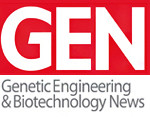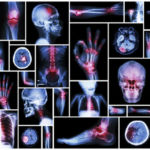Better, faster and more economical methods are emerging to analyze the genetic factors affecting our health.
“Genetic factors play some part in nearly all health conditions and characteristics. However, there are some conditions in which these factors are almost fully responsible for causing the condition. These are called genetic disorders, or inherited disorders. Some groups of inherited disorders can present similar symptomatic findings in individuals. To ensure proper care in these individuals, it is important to determine the genetic origin of their disorders to facilitate proper treatment. Classical Sanger sequencing using a gene-by-gene approach can be time-consuming and expensive. An enrichment method utilizing next-generation sequencing (NGS), on the other hand, can be faster and more economical.
An example of a group of complex disorders affecting the aorta is aortopathy. The aorta is the largest artery in the human body. It carries oxygenated blood from the heart to other parts of the body. Disruption to one or more elements of the cytoskeleton-receptor-extra cellular matrix (ECM) complex can affect aortic wall homeostasis, changing both the structure and mechanical properties of the aorta.
Although the FBN1 gene, whose mutations cause Marfan syndrome, plays a major role in aortopathy pathogenesis, several other genes are known to be involved. For example, COL3A1 mutations cause a related syndrome called Ehlers-Danlos syndrome type IV, and mutations in ACTA2 and MYH11 cause thoracic aortic aneurysms or TAAs (Figure 1).
Disorders featuring aortopathy overlap phenotypically and can be difficult to distinguish clinically. Because aortopathy can be treated using targeted medicine and/or interventional surgery, it is important to know the genetic origin of aortopathy to guide proper treatment before an aortic event occurs. This can be done using a targeted NGS panel of the aortopathy genes (Table 1).
Table 1. Nine of the 17 genes included in ARUPLaboratories’ NGS panel to determine genetic origin of Aortopathies—Marfan and Marfan-like syndromes at similar cost as one-gene Sanger sequencing. Additional newly discovered genes can continue to increase the mutation detection rate of the assay.
*: TAAD: thoracic aortic aneurism and dissection; CCA: congenital contractural arachnodactyly.
However, NGS target enrichment protocols can be laborious. Many protocols are straightforward but take considerable time to perform in the lab (Figure 2). Automating the process offers several advantages:1. With automation, manual pipetting errors and the need to repeat costly NGS experiments are minimized.2. Hands-on time is greatly reduced—from 8 hr for the manual preparation of 10–12 samples to 2 hr for up to 96 samples.3. Increased sample throughput (up to 96 samples/run) can be achieved with automation platforms featuring 96-channel pipette heads.
4. Multiple protocols can be automated on one open platform, deriving the full benefit of automation (Figures 3 and 4).
5. Results from automated methods are comparable to manual methods—the advantage is that data quality stays consistent irrespective of throughput (Table 2).
Figure 3. Flexible runs with the Agilent NGS Bravo platform—the plate map shows up to 96 SureSelect Exome and custom NGS panel capture enrichments in the same run in the event that there are not enough samples of the same type.
Figure 4. The Agilent NGS Bravo can process up to 96 samples/run and is sufficiently flexible to automate many different NGS protocols as well as other applications such as comparative genomic hybridization. It is equipped with all required accessories, such as heating, cooling, shaking, and a magnet for magnetic bead-based separation.
A 10-gene aortopathy automated NGS sequencing panel was developed at ARUP Laboratories. Of 175 samples analyzed, most pathogenic mutations were identified in the FBN1 gene correlating with Marfan syndrome. In addition to the NGS assay, samples were also evaluated for large deletions and duplications of the same aortopathy genes using a comparative genomic hybridization array.
A few large structural variants were detected, including a large duplication of the SMAD3 gene and a single exon deletion of FBN1. Interestingly, a substantial number of individuals with thoracic aortic aneurysms or other aortic involvement tested negative for a mutation in the aortopathy genes, suggesting that additional aortopathy genes exist.
The developers anticipate that the sensitivity will continue to rise as additional aortopathy genes are identified and included in the sequencing panel. Importantly, the aortopathy NGS research panel enables the identification of mutations in genes from individuals with disorders featuring aortopathy.”
It is exciting to see the progress being made with Genetic methods to help identify issues with Marfans and Ehlers-Danlos Syndrome.
Credits:
Whitney Wooderchak-Donahue, Ph.D.
Pinar Bayrak-Toydemir, M.D., Ph.D.
Click Here for the original source of this article
We appreciate your Likes and Comments









